MoonJeong Park
In-Place Feedback: A New Paradigm for Guiding LLMs in Multi-Turn Reasoning
Oct 01, 2025Abstract:Large language models (LLMs) are increasingly studied in the context of multi-turn reasoning, where models iteratively refine their outputs based on user-provided feedback. Such settings are crucial for tasks that require complex reasoning, yet existing feedback paradigms often rely on issuing new messages. LLMs struggle to integrate these reliably, leading to inconsistent improvements. In this work, we introduce in-place feedback, a novel interaction paradigm in which users directly edit an LLM's previous response, and the model conditions on this modified response to generate its revision. Empirical evaluations on diverse reasoning-intensive benchmarks reveal that in-place feedback achieves better performance than conventional multi-turn feedback while using $79.1\%$ fewer tokens. Complementary analyses on controlled environments further demonstrate that in-place feedback resolves a core limitation of multi-turn feedback: models often fail to apply feedback precisely to erroneous parts of the response, leaving errors uncorrected and sometimes introducing new mistakes into previously correct content. These findings suggest that in-place feedback offers a more natural and effective mechanism for guiding LLMs in reasoning-intensive tasks.
Influence Functions for Edge Edits in Non-Convex Graph Neural Networks
Jun 05, 2025Abstract:Understanding how individual edges influence the behavior of graph neural networks (GNNs) is essential for improving their interpretability and robustness. Graph influence functions have emerged as promising tools to efficiently estimate the effects of edge deletions without retraining. However, existing influence prediction methods rely on strict convexity assumptions, exclusively consider the influence of edge deletions while disregarding edge insertions, and fail to capture changes in message propagation caused by these modifications. In this work, we propose a proximal Bregman response function specifically tailored for GNNs, relaxing the convexity requirement and enabling accurate influence prediction for standard neural network architectures. Furthermore, our method explicitly accounts for message propagation effects and extends influence prediction to both edge deletions and insertions in a principled way. Experiments with real-world datasets demonstrate accurate influence predictions for different characteristics of GNNs. We further demonstrate that the influence function is versatile in applications such as graph rewiring and adversarial attacks.
The Oversmoothing Fallacy: A Misguided Narrative in GNN Research
Jun 05, 2025Abstract:Oversmoothing has been recognized as a main obstacle to building deep Graph Neural Networks (GNNs), limiting the performance. This position paper argues that the influence of oversmoothing has been overstated and advocates for a further exploration of deep GNN architectures. Given the three core operations of GNNs, aggregation, linear transformation, and non-linear activation, we show that prior studies have mistakenly confused oversmoothing with the vanishing gradient, caused by transformation and activation rather than aggregation. Our finding challenges prior beliefs about oversmoothing being unique to GNNs. Furthermore, we demonstrate that classical solutions such as skip connections and normalization enable the successful stacking of deep GNN layers without performance degradation. Our results clarify misconceptions about oversmoothing and shed new light on the potential of deep GNNs.
CoPL: Collaborative Preference Learning for Personalizing LLMs
Mar 03, 2025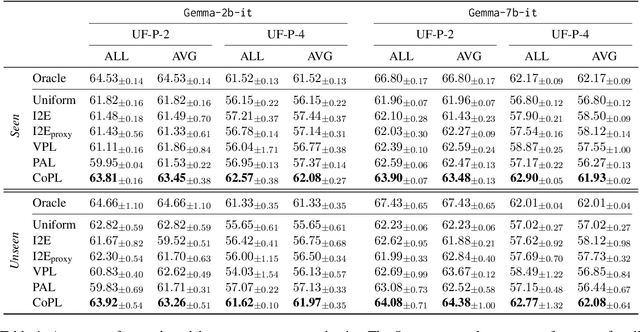


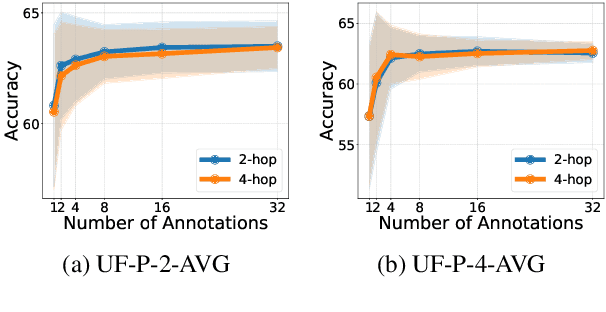
Abstract:Personalizing large language models (LLMs) is important for aligning outputs with diverse user preferences, yet existing methods struggle with flexibility and generalization. We propose CoPL (Collaborative Preference Learning), a graph-based collaborative filtering framework that models user-response relationships to enhance preference estimation, particularly in sparse annotation settings. By integrating a mixture of LoRA experts, CoPL efficiently fine-tunes LLMs while dynamically balancing shared and user-specific preferences. Additionally, an optimization-free adaptation strategy enables generalization to unseen users without fine-tuning. Experiments on UltraFeedback-P demonstrate that CoPL outperforms existing personalized reward models, effectively capturing both common and controversial preferences, making it a scalable solution for personalized LLM alignment.
Taming Gradient Oversmoothing and Expansion in Graph Neural Networks
Oct 07, 2024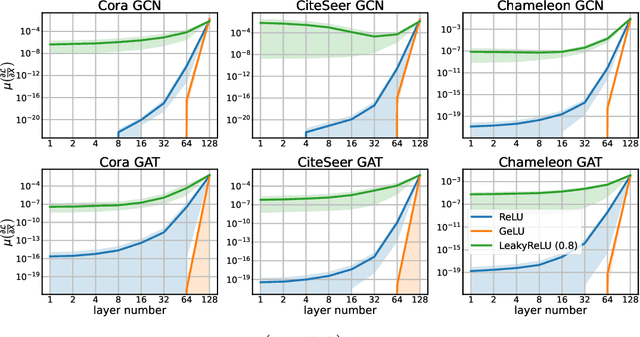

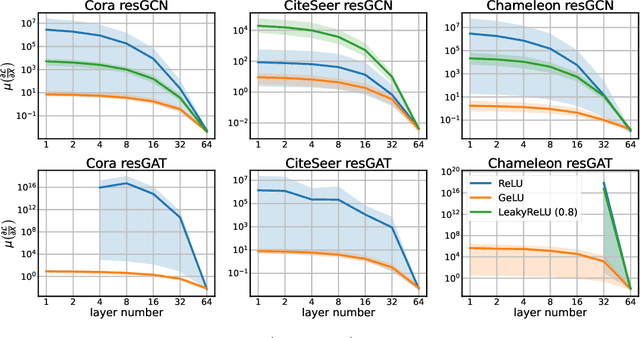

Abstract:Oversmoothing has been claimed as a primary bottleneck for multi-layered graph neural networks (GNNs). Multiple analyses have examined how and why oversmoothing occurs. However, none of the prior work addressed how optimization is performed under the oversmoothing regime. In this work, we show the presence of $\textit{gradient oversmoothing}$ preventing optimization during training. We further analyze that GNNs with residual connections, a well-known solution to help gradient flow in deep architecture, introduce $\textit{gradient expansion}$, a phenomenon of the gradient explosion in diverse directions. Therefore, adding residual connections cannot be a solution for making a GNN deep. Our analysis reveals that constraining the Lipschitz bound of each layer can neutralize the gradient expansion. To this end, we provide a simple yet effective normalization method to prevent the gradient expansion. An empirical study shows that the residual GNNs with hundreds of layers can be efficiently trained with the proposed normalization without compromising performance. Additional studies show that the empirical observations corroborate our theoretical analysis.
Distinguishing Neighborhood Representations Through Reverse Process of GNNs for Heterophilic Graphs
Mar 11, 2024

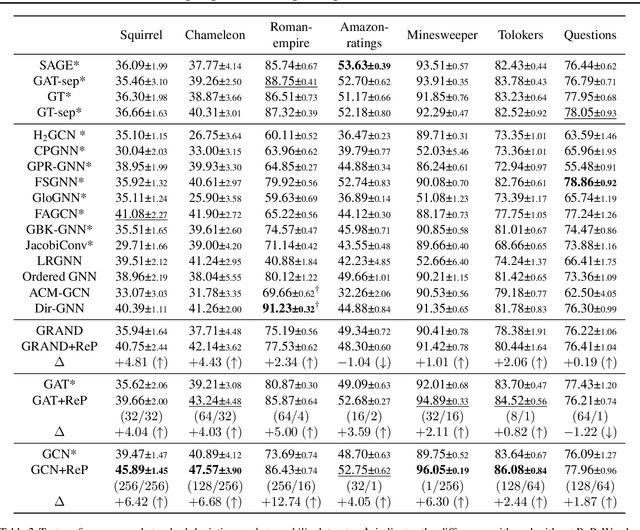
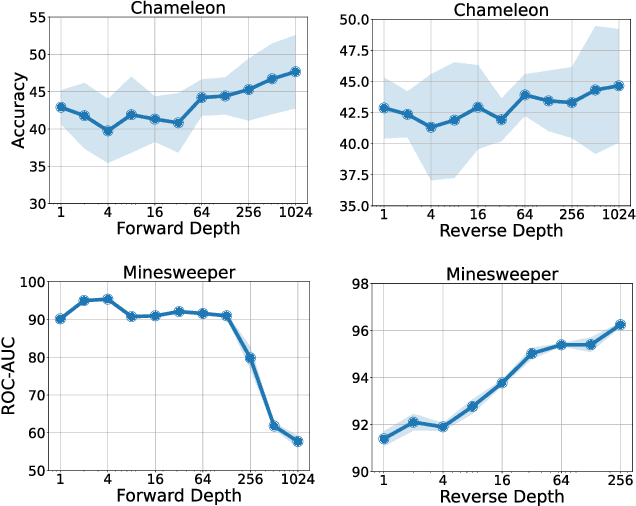
Abstract:Graph Neural Network (GNN) resembles the diffusion process, leading to the over-smoothing of learned representations when stacking many layers. Hence, the reverse process of message passing can sharpen the node representations by inverting the forward message propagation. The sharpened representations can help us to better distinguish neighboring nodes with different labels, such as in heterophilic graphs. In this work, we apply the design principle of the reverse process to the three variants of the GNNs. Through the experiments on heterophilic graph data, where adjacent nodes need to have different representations for successful classification, we show that the reverse process significantly improves the prediction performance in many cases. Additional analysis reveals that the reverse mechanism can mitigate the over-smoothing over hundreds of layers.
SpReME: Sparse Regression for Multi-Environment Dynamic Systems
Feb 12, 2023



Abstract:Learning dynamical systems is a promising avenue for scientific discoveries. However, capturing the governing dynamics in multiple environments still remains a challenge: model-based approaches rely on the fidelity of assumptions made for a single environment, whereas data-driven approaches based on neural networks are often fragile on extrapolating into the future. In this work, we develop a method of sparse regression dubbed SpReME to discover the major dynamics that underlie multiple environments. Specifically, SpReME shares a sparse structure of ordinary differential equation (ODE) across different environments in common while allowing each environment to keep the coefficients of ODE terms independently. We demonstrate that the proposed model captures the correct dynamics from multiple environments over four different dynamic systems with improved prediction performance.
 Add to Chrome
Add to Chrome Add to Firefox
Add to Firefox Add to Edge
Add to Edge